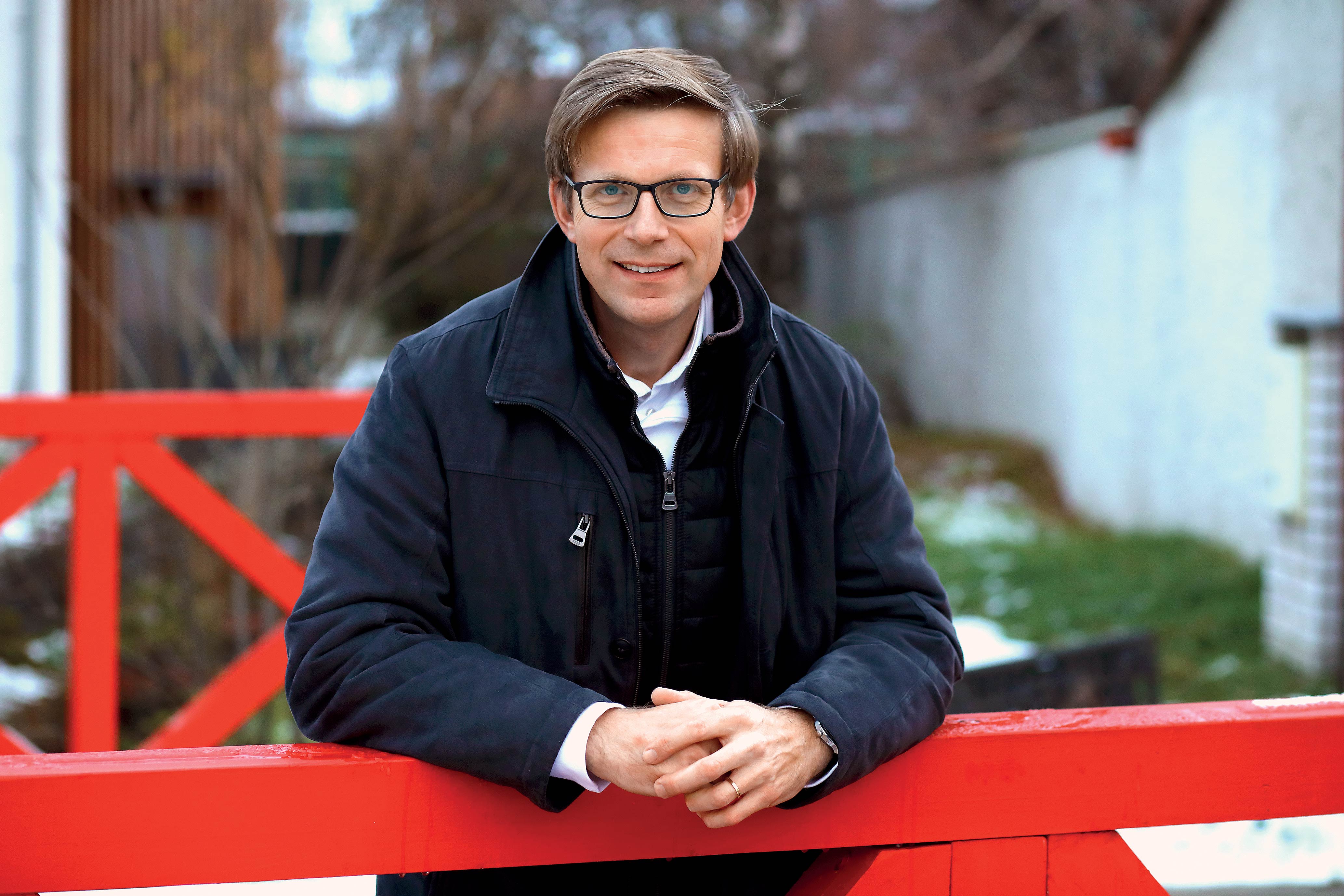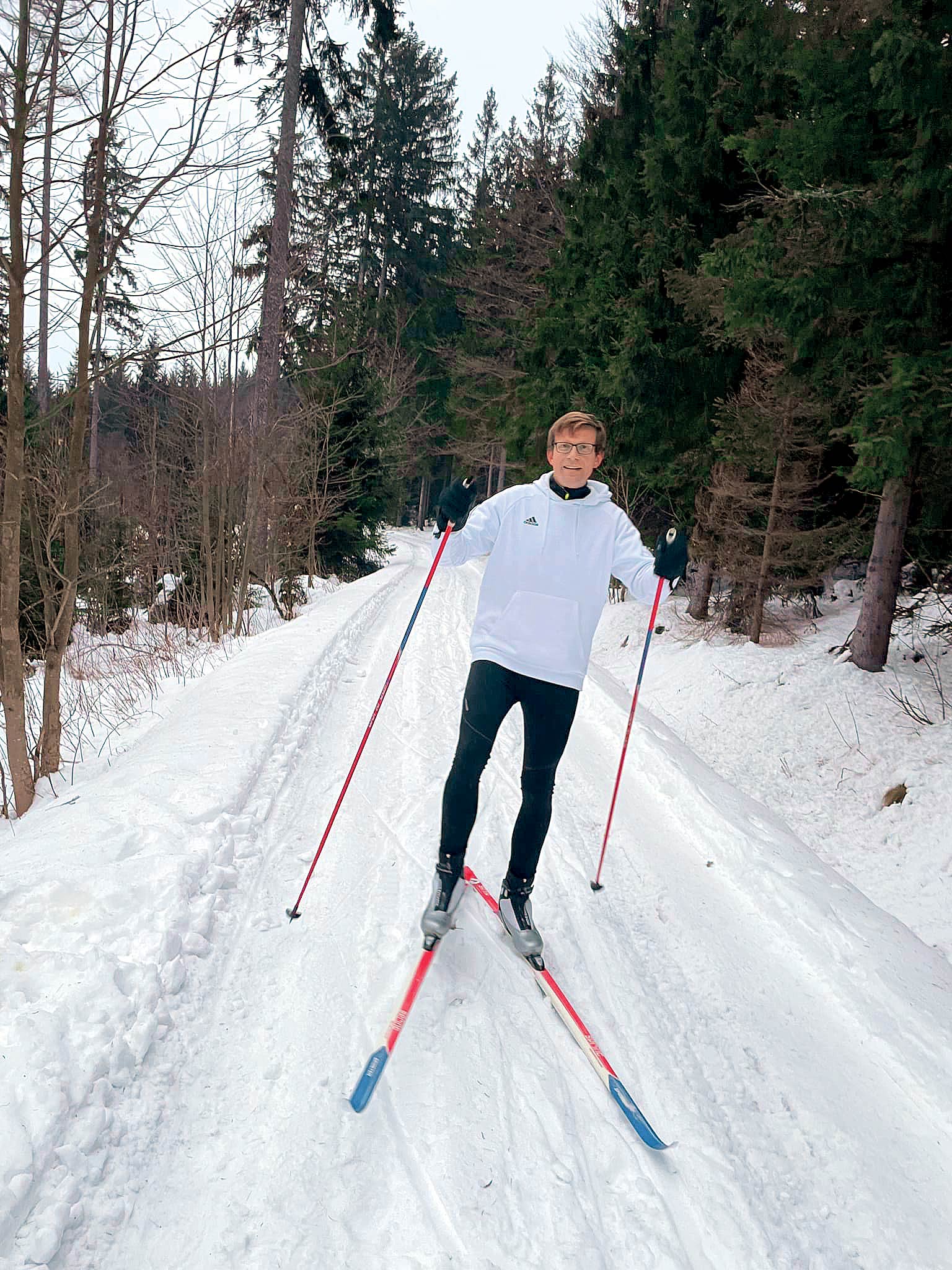I met with Martin Kupka a few days before he was to be named the new minister of transportation, still at his old workplace, the Central Bohemian Regional Office. I must admit that upon leaving I felt that he was a walking transportation encyclopedia.
It was your birthday on October 28, the public holiday. I assume that the election results were a welcome additional present...
Certainly. A very nice one at that. And it was an important and happy event. I do not mean just the election results, but rather what they represent in terms of a change for our country. The Communists leaving the Chamber, the SPD – a representative of extremist politics – growing weaker... These are all good news.
Transportation is an unfortunate posting, so let us get straight to the topic of roads. You have mentioned that your priorities will include Highway D35 – the parallel to D1, and the Prague Ring Road. What state are they in now and how much progress do you foresee by the end of the current election term?
My apologies in advance, but this is a topic that will require me to go into a lot of detail because these are all transportation structures with their own individual backstories. Let us start with the construction of the 511, or the connection between the D1 and Běchovice. An appeal against the location permit ruling has been filed with the South Bohemian Regional Office, which was appointed by the government as an unbiased mediator due to the road not passing through its territory. We are hoping that the Region makes a decision as soon as possible so we can start taking follow-up measures. I sincerely hope that we can get started on this road's construction as soon as possible – certainly during this election term. It is a key piece of infrastructure for Říčany as well as the Prague metropolitan area.
Then there is the north, comprising three different projects. As for the construction of the 518 and 519, which connect Ruzyně to Březiněves, the preparation of EIA documentation has not been initiated yet, which is a precursor for any further actions. I have to say that partly thanks to my initiative as regional councilman we will see some change – early next year, the Road and Motorway Directorate will start soliciting documentation for the proper construction of this stretch, which was also deemed acceptable by the Prague administration. Every transport structure has its enemies wherever it goes. The RMD and the planners now have to look for a technical solution that will lessen the impacts as much as possible. And now for the 520, connecting Březiněves and Počernice. It has passed the initial screening and full documentation is now being drawn up. There are two possible forms of construction – recessed or tunneled. The tunnel is favored in this region, making it more likely to be accepted. So this structure should see major progress in terms of the documentation in the coming four years. We need to finalize the EIA as well as all the other groundwork in order to move forward.
As for Highway D35, two key sectors will open in the coming year, to be followed by further construction towards Vysoké Mýto, Litomyšl, all the way to Mohelnice. The government has not obtained construction permits for all the remaining sectors, but that is being worked on diligently.
What about Prague itself and the inner ring road?
It is key that Prague puts together a project for it. It needs to have a clear vision and work on getting location and construction permits. That is where Prague has been a little lackadaisical, however, so perhaps next year's election will bring about a step forward with this key piece of transport infrastructure as well. In order to solve the issues of Prague and its metropolitan area, we need to build the bypass, or the Prague Ring Road, to divert transit traffic, but also the inner ring road. Currently, there is a bit of a paradox going on in that the Blanka Tunnel, as part of the inner ring road, has taken on a large part of the functions of a bypass. This means a huge burden for the V Holešovičkách street as well as other parts of the capital's transportation system. The Prague Ring Road and the D35 are crucial transportation structures in terms of the entire country. This does not take away from the importance of other structures, however. I could mention the D6, for instance, which we will keep working on, or the D11, where the construction of the sector between Jaroměř and Poland will need to be accelerated. Then the small sector of the D1 close to Přerov in Moravia needs to be finished. And finally, the D49 towards Slovakia and the D52 towards Vienna. I am trying to name as many structures as possible on purpose, and I dare say that the new government will do its best to keep up or even increase the rate at which funds have been invested into transportation, also through PPP projects.
Let us move on from roads to railways or waterways, what are the key things going on there? I assume the Donau-Odra-Elbe waterway corridor is dead...
It is not at all a realistic plan. The studies made to support it were overly positive about its effect and their cost estimates were too low. This has been widely accepted by experts. As for railroads, we are hard at work on a number of railway stations and corridors. But we are faced with a crucial project – high-speed railways. We have not built a single kilometer, where we should ideally have a network connecting the north and the south, allowing for effortless travel from Berlin to Prague and onwards to Vienna, or cutting down travel times between Prague and Brno. This is a truly crucial piece of infrastructure, and I feel that it will not be possible without a specifically tailored Act. Because the government will need to provide individual solutions to improve the situation of each of the territories affected by these structures. I sincerely hope that surrounding municipalities get supplied with high-speed internet alongside the railway construction, for instance. And also, where appropriate, walkways or local roads should be built in areas where the railways will go. All of that will help high-speed railways become more generally accepted.
Is your previous posting of councilman for transportation of the Central Bohemian Region a big help for that of minister of transportation?
The expertise of our colleagues in the regions is vastly important. We hold regular meetings as part of the Transportation Committee of the Regional Association. And I firmly believe that the minister of transportation or their departmental deputy should always be present at these meetings. This is where Karel Havlíček failed miserably and he should show great remorse for allowing the government to invest money into modernizing railways that have now shown to be unserviceable due to a lack of passengers. The region should invest in transportation that is in demand instead.
What kind of an impact will the growing Green Deal have on highway construction?
Charging stations are a key piece of infrastructure. And I feel that the government needs to provide the proper conditions for it to develop rapidly. I am, nevertheless, convinced that the future will bring a wider array of transport solutions than just electromobility. That is an area where we should invest in science, research, and innovation. It is also one of the key priorities of the new government.
Do you think that the year 2035 will really mark the end of combustion engines?
I think it is just utter nonsense and it benefits no one. It is just a way to make people scared and turn them against the European Union if it deems to accept such measures. And as I mentioned just a little while ago, I see the way forward in positive motivation, in positive direction. By which I mean the research investments, which will allow the Czech Republic to come up with its own solutions and not have to rely on technologies developed abroad. We were one of the leading countries in Europe in this regard during the First Republic, after all. And we could be once again.
Is there work done by your predecessor that you can build on, or is there something that needs to be torn down instead?
A person who refuses to build on their predecessor's work in terms of the road network should not even be allowed on Ministry premises, seeing how long it takes to get the ball rolling on transportation construction work. Quite the opposite, continuing the work on projects that make sense is an absolute must, as is expanding on them and expediting the steps that need to be taken prior to new construction. Tearing something down is too easy. But building something from the ground up with how hard finding funding is, disputing the tracing done by your predecessors, that is a real dead end. On the other hand, Czechia does have a substantial infrastructure debt, which is something that should be properly seen to by the Minister.
Your hobbies include travelling. Do you enjoy it as a minister of transportation? Aren't you constantly looking at what the roads are like, making all your travels into a bit of a business trip?
I am well acquainted with my professional bias. [laughs] It does happen quite often, to the constant moans of my family, that I stop the car to get out on a certain road to see what exactly is wrong with it. Or when we go abroad I look for the things they did right and that we could learn from. So my family is having a great time at the beach, and I am checking out the way the road is paved on the promenade and how they did the drainage.

CV BOX
Martin Kupka (born October 28, 1975, in Jilemnice) is the new minister of transportation and former mayor of Líbeznice and representative of the Central Bohemian Region.
He graduated in journalism and mass communication from the Faculty of Social Sciences at Charles University, later becoming a radio show host at Czech Radio.
In 2001, he made the transfer to public relations. He was the spokesperson for Prague City Hall, the Central Bohemian Region, and even the government in 2010. He was voted spokesperson of the year on multiple occasions.
In 2010, he was elected mayor of Líbeznice, six years later becoming a representative of the Central Bohemian Region, where he was the deputy regional president up until now. He has been the vice-chair of the ODS since 2014, and an MP since October 2017.
He enjoys classical music, books, and hiking in nature. He is married and has two children.

Excellent background
Petr Kupka says that his time at the Central Bohemian Regional Office was a great source of experience for his new position as minister of transportation. “It provided me with an excellent background. The Central Bohemian Region has the highest amount of Class II and Class III roads, the entire network is 8625 km long. The region with the second-highest amount is only at two-thirds that length. We also have the busiest roads, the most bridges, and the most issues. In the areas surrounding Prague, the metropolitan zone, Class III roads are as busy as Class I roads in other regions. That makes this region very specific in that sense.”